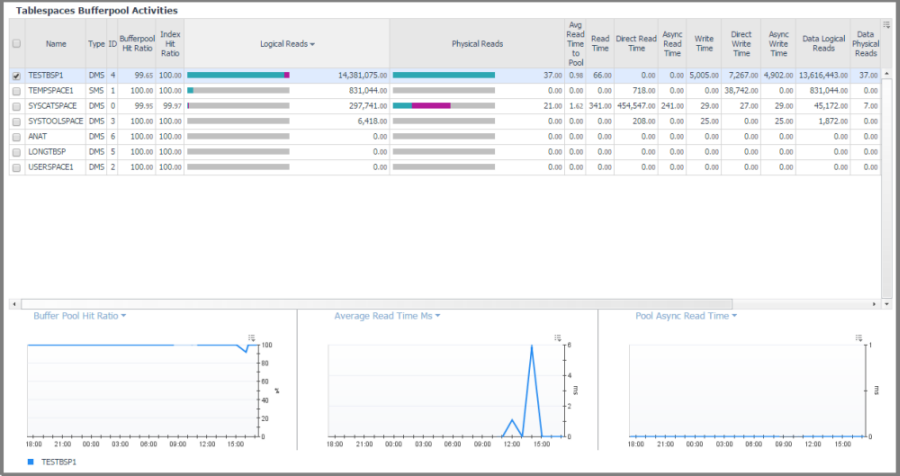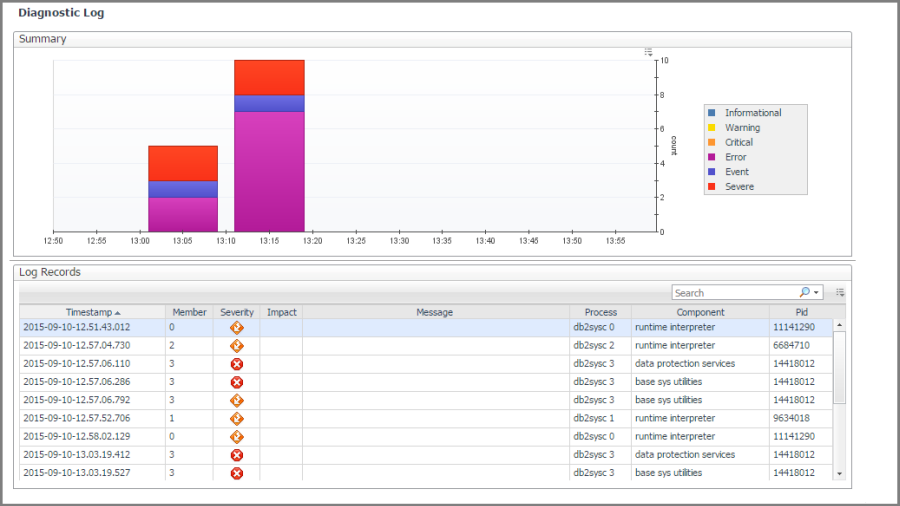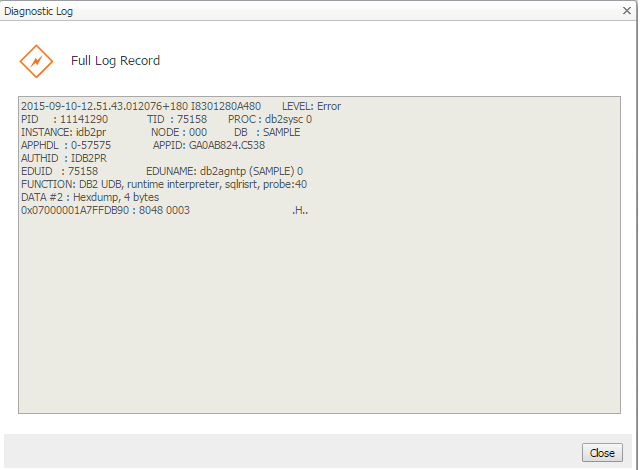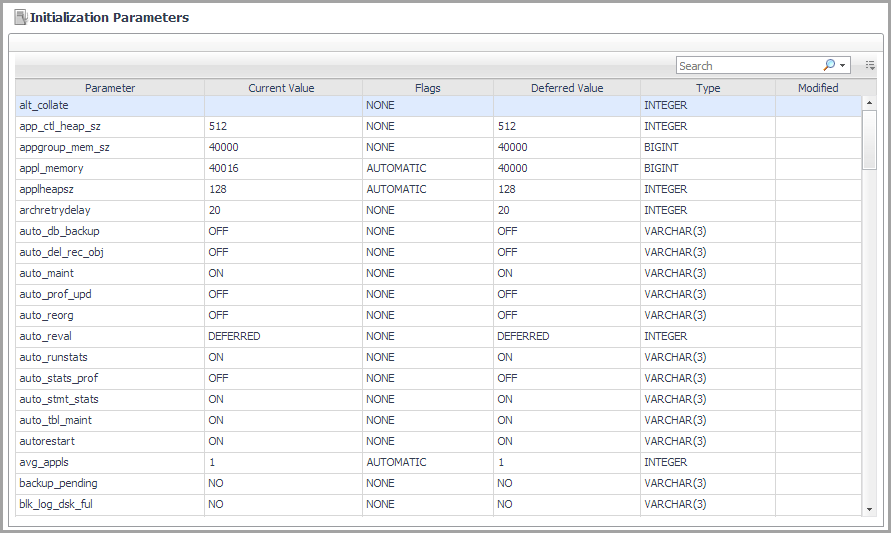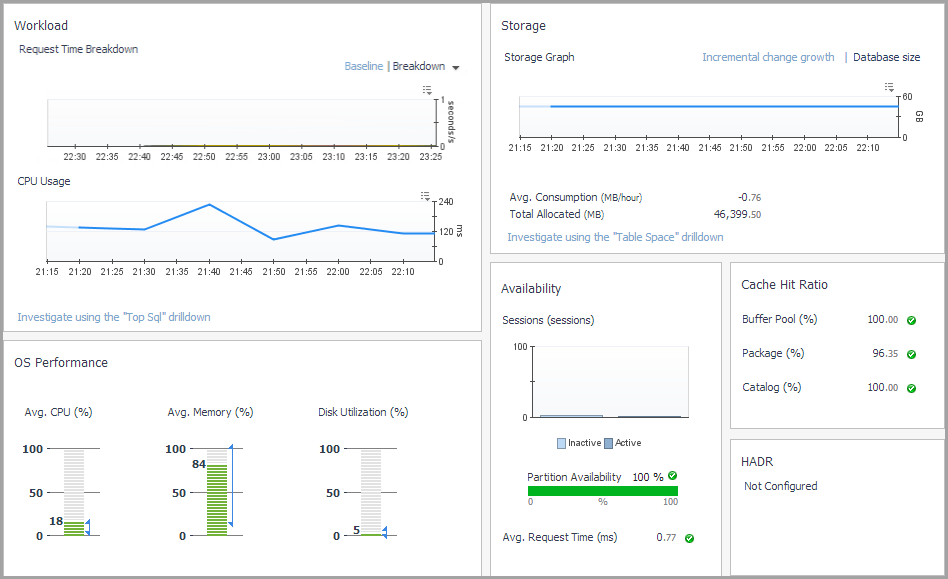Tablespaces Buffer Pool Activities
On the Database home page toolbar, click Storage and select Tablespaces Bufferpool Activities.
This pane provides the Tablespaces Bufferpool Activities view.
| |||
| |||
| |||
| |||
| |||
| |||
| |||
| |||
| |||
| |||
| |||
| |||
| |||
| |||
| |||
| |||
| |||
| |||
| |||
| |||
| |||
| |||
| |||
| |||
| |||
Log Drill-down
On the Database home page toolbar, click Log.
This pane provides the following views:
|
• |
Selecting any record will open a pop-up with the full log record. |
Configuration Drill-down
On the Database home page toolbar, click Configuration.
This pane provides the Initialization Parameters view.
| |||||||||||||
|
Clicking any table cell displays the change history for the corresponding initialization parameter. |

